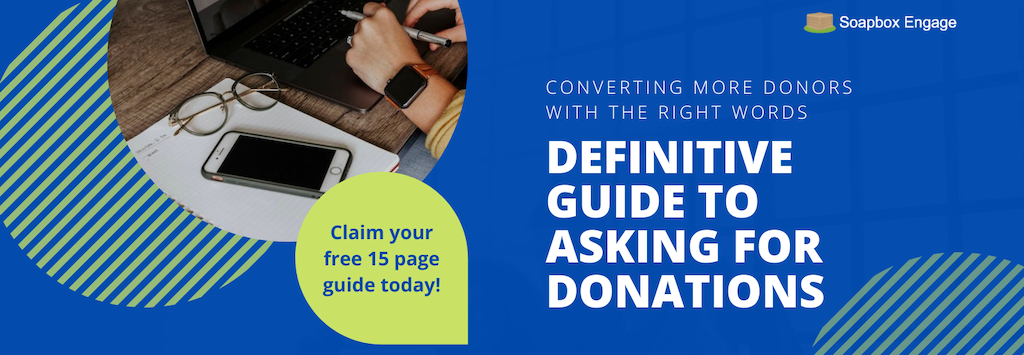
For mission-driven organizations, one of the underlying goals is to recruit more people to work to fulfill your mission. Many hands make light work, and an effective way to get more supporters for your cause is through an advocacy campaign.
Advocacy campaigns of the past may have relied on door knocking or flyering, and that is still effective. But in recent years, especially as we’ve continued to rely more on online technologies due to the pandemic, digital advocacy campaigns have grown even more popular. They are a very effective way to get a wide variety of people engaged in your cause.
Table of Contents
What is an advocacy campaign?
An advocacy campaign is an organized effort to mobilize people to support (or oppose) a specific cause, policy, issue, or position.
Of course, this could mean many different things for many different organizations. If you’re working at a criminal justice reform organization, perhaps you are working on an advocacy campaign for Death Penalty Abolition. If you work in an arts education organization, perhaps you want to launch an advocacy campaign encouraging people to vote on a specific piece of school board legislation. No matter what your goal is, a digital advocacy campaign can be very effective– if you do it well. And we’re here to help with that.
5 Tips for an Effective Digital Advocacy Campaign
1) Start With a Clear, Compelling Message
Your organization’s mission may be broad, with a variety of different strategies to achieve it. Your advocacy campaign should be far more specific. It’s important that your messaging is something simple enough to remember, and clear in its goal. For example, if you are an arts education organization, launching an advocacy campaign pushing for “arts education reform” is not enough. What is the specific thing you are advocating for? Increased funding? More arts options? Name what you want clearly so that your supporters have something to rally around.
2) Use Visuals
Your messaging is important, but words on a screen alone won’t make people stop scrolling to read. You will need compelling visuals to help illustrate your call to action. Depending on the issue you are advocating for, it may be useful to have “characters.” These can be people who are impacted by the issue and whose image can accompany a story about why this is important. Only with their consent, of course.
3) Communicate face-to-face
The most effective advocacy campaigns will have digital and in-person components. You want to create personal connections with your supporters so that they will be moved to advocate on your organization’s behalf. An in-person event can be an effective way to do that. Furthermore, if you have a robust digital campaign as well, an in-person event may be a perfect time to galvanize your local supporters to use peer-to-peer strategies and encourage their friends to advocate as well.
Luckily, we also have tools like Zoom that allow us to have face-to-face connections even when we can’t meet in person. Whether digital or in-person, offering moments for face-to-face connection will enhance your advocacy campaign.
4) Create a consistent timeline, and stick to it
When it comes to digital messaging, posting about something once or twice is not going to be very effective. It takes many times for someone to see something before it sticks in their minds. It’s important that you are messaging at a consistent cadence, so that people are in touch throughout the entirety of the campaign. You can do this through a combination of social media posts, email campaigns, blog posts, and more. You should share a variety of content such as campaign updates, calls-to-action, stories that help illuminate your cause, etc. Creating a timeline will help you to keep track of what you’re doing and ensure you stay consistent.
5) Make it easy to be involved
With a compelling, specific message fueling your advocacy campaign, your community will be moved to act. You should make acting as simple as possible for them. Do you want them to write a letter to their representative? Craft a messaging template beforehand, that they can easily replicate. Do you want them to sign a petition? Embed that in your email. It’s important that you make it easy for your supporters to advocate. Too much work and they’re likely to exit the page instead of taking action.
If you want to keep improving your advocacy campaigns, here are three resources to help you do that:
- Surefire Ways to Improve Your Nonprofit Storytelling: Advocacy campaigns require compelling stories. Check out this blog post with tips on improving your storytelling.
- 5 Marketing Strategies Every Nonprofit Should Implement: Improving your marketing altogether will give your digital campaigns a greater chance of success. This blog post offers 5 marketing strategies for every nonprofit.
- Advocacy Basics Every Nonprofit Should Understand: Before you can build an effective digital advocacy campaign, there are some things you need to understand about advocacy in general. This blog post offers those basics.
